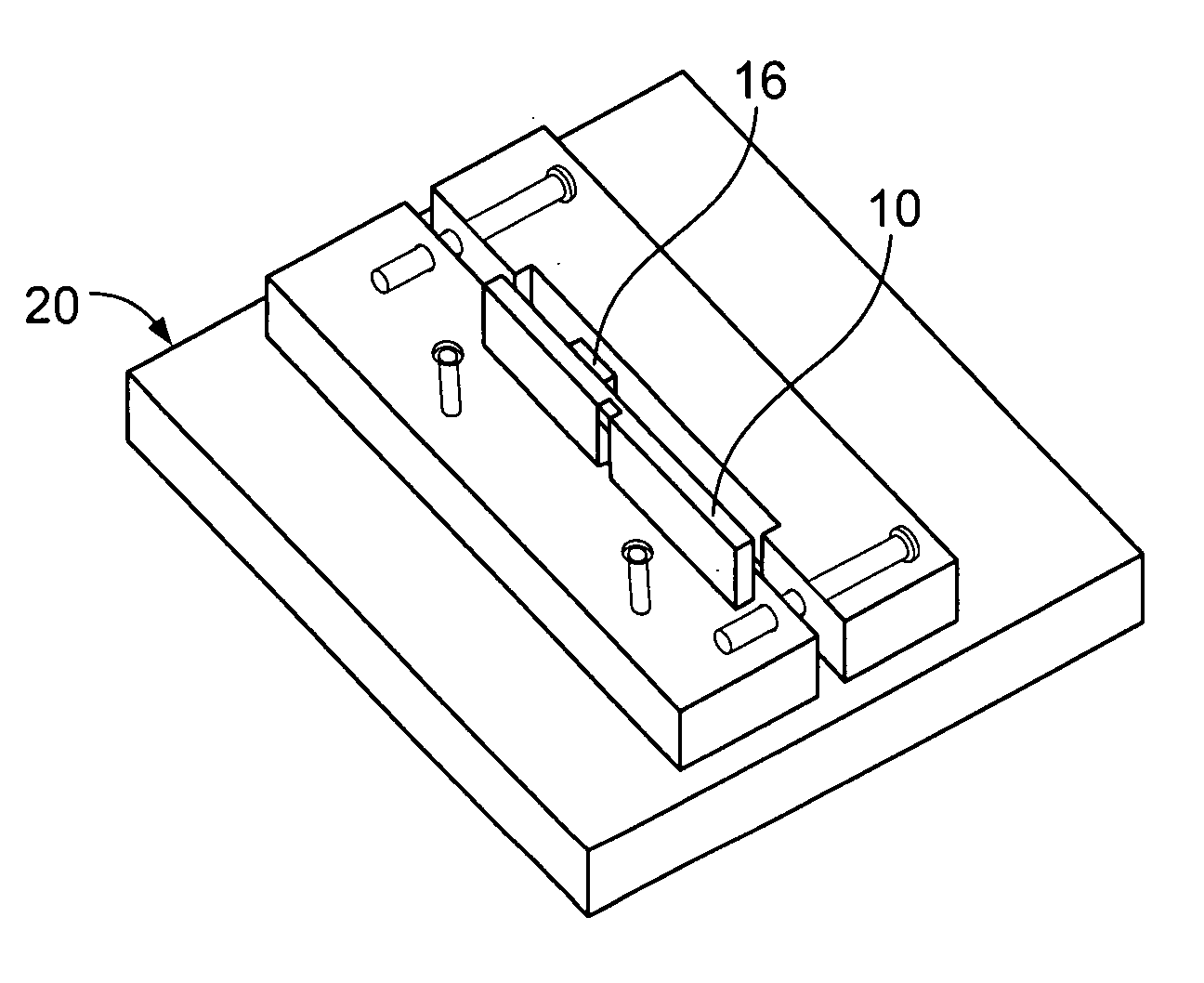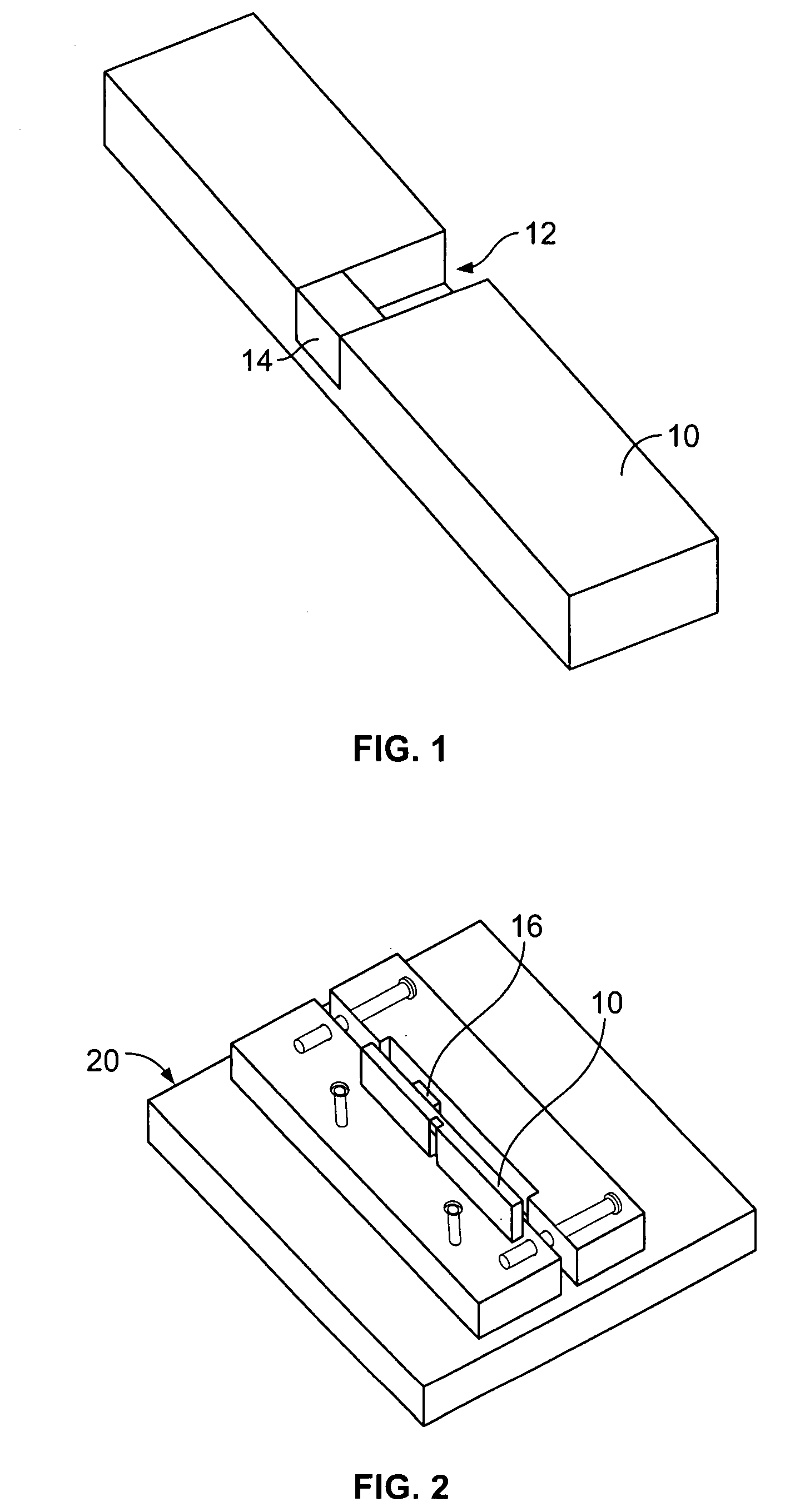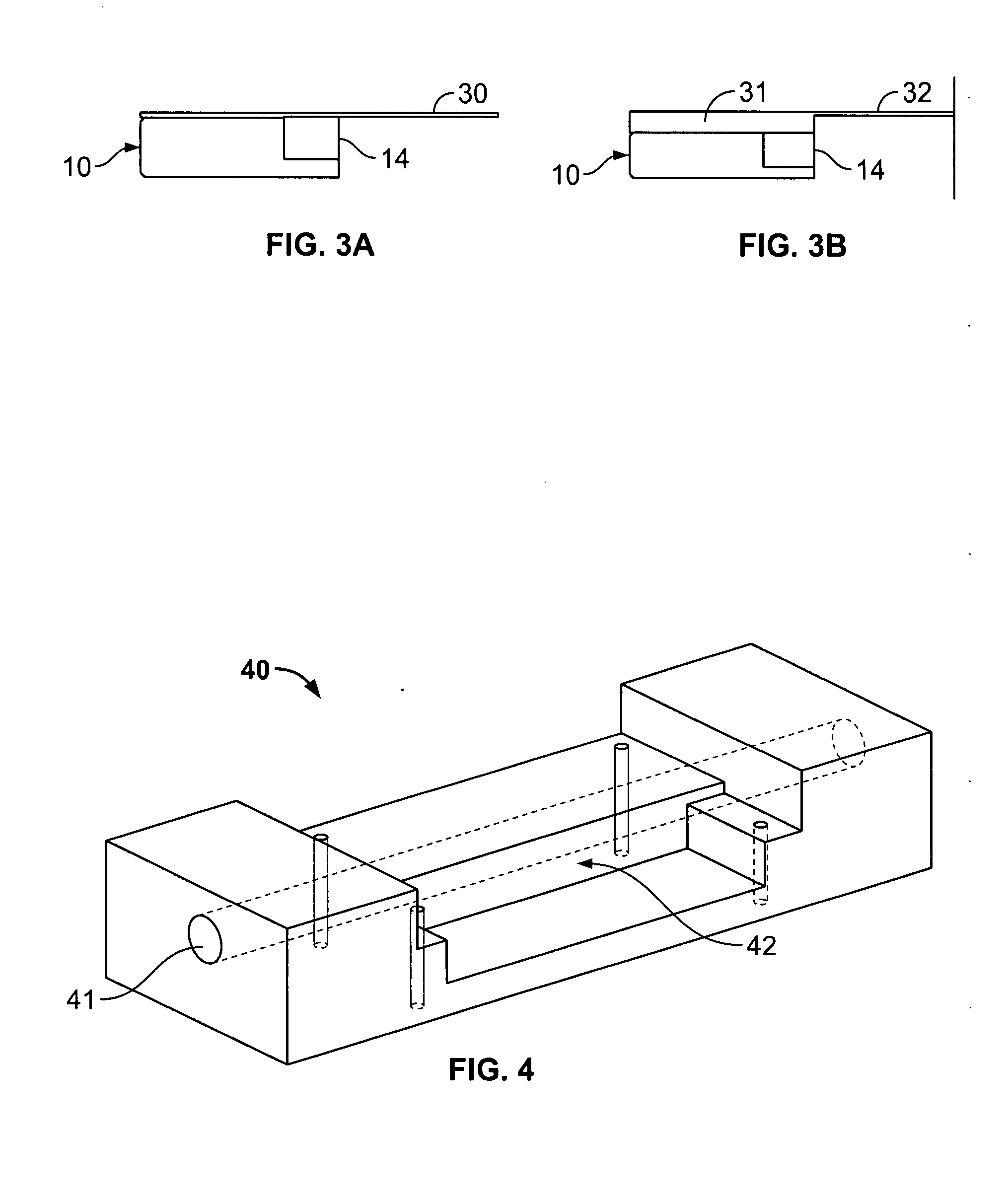Flow-through apparatus for microscopic investigation of dissolution pharmaceutical solids
a flow-through apparatus and dissolution solid technology, applied in the direction of instruments, liquid displacement, separation processes, etc., can solve the problems of difficult prediction, hydrodynamic impact study, and insufficient understanding of the hydrodynamics of most standard dissolution test methods
- Summary
- Abstract
- Description
- Claims
- Application Information
AI Technical Summary
Benefits of technology
Problems solved by technology
Method used
Image
Examples
example 1
[0089]Flow profiles through rectangular channels of 4×4 mm, 6×2 mm, and 4×2 mm were analyzed using CFD. Prior to using CFD, however, the proper geometries for exemplary channels were created using GAMBIT software (Fluent, Inc., Lebanon, N.H.). 3D rectangular volumes with various cross sectional geometries (4×4 mm, 4×2 mm, 6×2 mm) were created. Simple rectangular meshes were set up to consist of around 150,000 nodes, fine enough to accurately represent the velocity profiles. This mesh was of constant interval size, which led to convergence of the solution in CFD in less than 1 hour. Boundary types were also selected in GAMBIT. Inlets were set as velocity inlets, outlets were pressure outlets, and all walls were set as walls.
[0090]In CFD, various parameters were set up for each case. The boundary conditions set in GAMBIT were further described based on what kind of tests were to be performed. For the initial velocity tests, the energy equation was not solved. Material properties were ...
example 2
[0099]Shear stresses and rates over a compact surface were modeled using CFD for comparison to existing dissolution apparatus and in vivo. In an existing dissolution device, a USP II apparatus, shear stresses and shear rates have been modeled using CFD. (See, e.g., Kukura, J., J. L. Baxter, and F. J. Muzzio, Shear distribution and variability in the USP Apparatus 2 under turbulent conditions, International Journal of Pharmaceutics, 2004, 279(1-2): p. 9-17.) In addition to these reported results, a paper by Abrahamsson models the shear stresses experienced by a compact in the human fed stomach by CFD. (See, e.g., Abrahamsson, B., et al., A Novel in Vitro and Numerical Analysis of Shear-Induced Drug Release from Extended-Release Tablets in the Fed Stomach, Pharmaceutical Research, 2005, 22(8): p. 1215-1226.) These results were taken into consideration as a comparison for the shear stresses experienced in a flow-through apparatus associated with the present disclosure.
[0100]Abrahamsson...
example 3
[0103]It is desirable to compare fluid flow in an exemplary apparatus associated with the present disclosure with that in the rotating disk apparatus to correlate existing data. The rotating disk or Wood's Die apparatus was chosen as a comparator because the hydrodynamics and mass transport are well known and characterized. (See, e.g., Levich, V. G., Physicochemical Hydrodynamics. 1962. 700 pp.) To establish a relationship between rotating disk speed and volumetric flow rate for an exemplary channel of a flow-through apparatus, fluxes are equated in each apparatus.
Flux of a drug from a rotating disk is described as:
J=0.62D2 / 3ν−1 / 6ω1 / 2Cs (Equation 5)
[0104]The dissolution rate for a drug compact in a rectangular channel is:
R=1.468Q1 / 3D2 / 3Csb(L2H2W)1 / 3(Equation6)
[0105]To convert this into a flux, divide by area.
J=1.468A-1Q1 / 3D2 / 3Csb(L2H2W)1 / 3(Equation7)
[0106]When we equate the flux in Equation 5 and Equation 7, solve for ω1 / 2 and substitute the flow cell tablet area for A, (6.8*10−6 m...
PUM
| Property | Measurement | Unit |
|---|---|---|
| Thickness | aaaaa | aaaaa |
| Thickness | aaaaa | aaaaa |
| Thickness | aaaaa | aaaaa |
Abstract
Description
Claims
Application Information
 Login to View More
Login to View More - R&D
- Intellectual Property
- Life Sciences
- Materials
- Tech Scout
- Unparalleled Data Quality
- Higher Quality Content
- 60% Fewer Hallucinations
Browse by: Latest US Patents, China's latest patents, Technical Efficacy Thesaurus, Application Domain, Technology Topic, Popular Technical Reports.
© 2025 PatSnap. All rights reserved.Legal|Privacy policy|Modern Slavery Act Transparency Statement|Sitemap|About US| Contact US: help@patsnap.com



